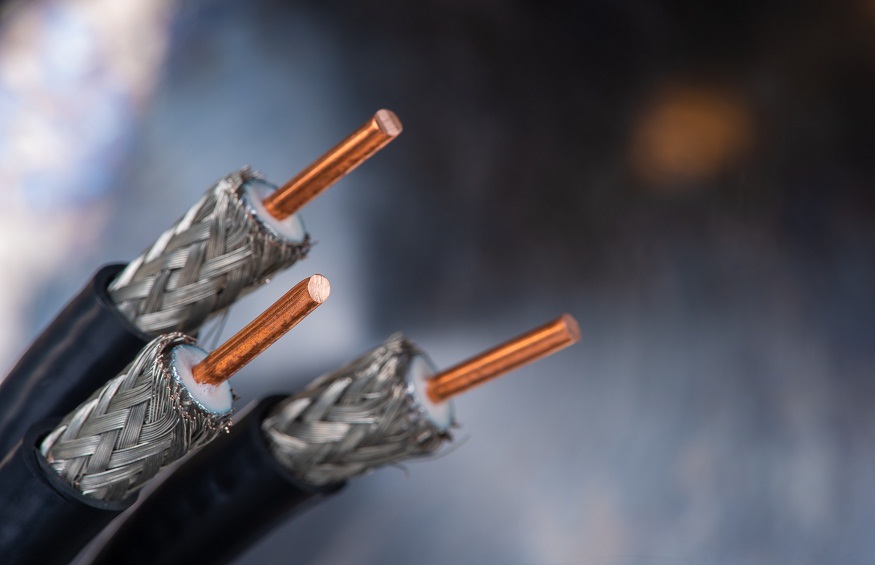Different Types of Coaxial Cables
- layers – Protective plastic layers protect internal components against damage.
- Braided mesh – This helps protect electromagnetic interference.
- Insulators – Insulators maintain spacing between shield and center conductor.
- Copper conductors – These conductors serve as the point at which data gets transmitted.

Types
There are many types of coaxial cables. Here are the most common ones:
1. RG59
These are common types of coaxial cables, but when it comes to performance, they are on the low-end. Their design often combines thick insulation, rigid shielding, and flexibility. Although they are well-protected as other types, they are less vulnerable to interference. Their applications mainly include connecting TVs and satellite boxes. How manufacturers have built these coaxial cables make them a suitable option when connecting a closed-circuit TV setup. Plus, they are more ideal for connecting a device in a tight space because of their flexibility.
2. RG-6
This is a 75 ohm coaxial cable with an F-type connector.It’s the same cable we use with satellite/cable TV devices. It comes pre-wired in most homes, making it easier for us to install and wire. The F-type connector is usually mid-size, made for common use. There are several reasons this cable is superior to their counterparts. First, this type is a heavy-duty cable all-round. The core is thicker, providing more reliable and stronger connection for entertainment needs. In addition, it has a higher-quality shielding and thicker insulation. Both of these helps the cable to minimize noise or external interference and protect its core against damage.
3. RG-8
We use RG-8 cables in applications that require a high voltage handling as well as lower loss over a long-distance transmission. This cable has a 50-0 a.m impedance, making it ideal for ham radio devices or other apparatuses with a high-power transmission. Mostly, you will see it in broadcasting and telecommunication industries. Thanks to its helpful loss resistance, the cable is more effective for conveying radio frequency over a long distance.
4. RF
This coaxial cable helps to conduct radio frequencies. To be more specific, it produces the frequency in multi-megahertz range. It is regarded as a standard input component for TVs. Plus, you can recognize it by its familiar single pins, which plug into RF inputs on devices.
5. Hardline
Hardline offers a unique level of protection from loss of signals. Compared to many other types, hardline is a thicker coaxial cable. It still has a conductive core made of aluminum or copper and can withstand harsh environments.
The bottom line is that, the telecommunication and broadcasting industries use different types of coaxial cables in various applications. The type of cables they use heavily depends on the application. Because there are different types of coaxial cables, it will be best to know how each one works and their resistance amount so you can narrow down the wide pool of these products.



